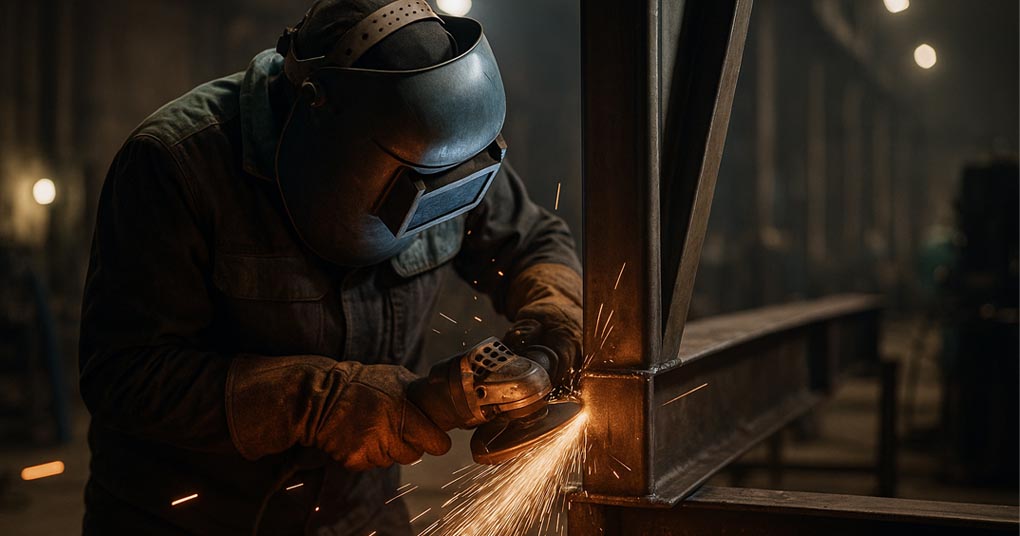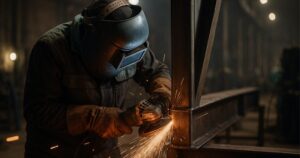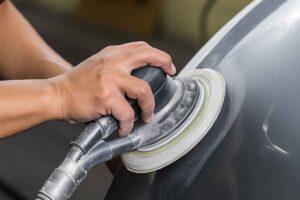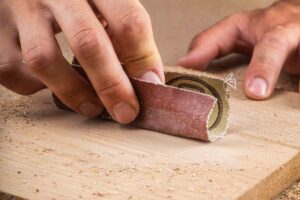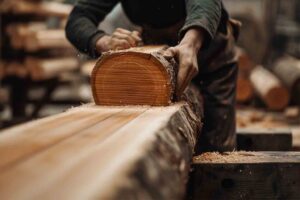Protecting yourself from Grinding Hazards: Dust, Noise, Vibration, and more.
Grinding may appear to be a routine industrial task, but without proper safety measures, it can pose serious health risks. From airborne dust and excessive noise to hand-arm vibration and chemical exposure, each hazard can lead to long-term health consequences.
Here’s what you need to know to protect yourself and your team.
- Health hazard from grinding dust
Grinding, especially of metals such as steel, aluminum, or stainless steel, produces fine dust particles that become airborne. These particles can be extremely small—often less than 10 microns—and easily inhaled deep into the respiratory system.
- Prolonged or repeated exposure can result in:
- Chronic Obstructive Pulmonary Disease (COPD)
- Pneumoconiosis (lung disease caused by inhaling metal or mineral dust)
- Increased risk of lung cancer
- Breathing irritation and long-term damage to alveoli
- Prolonged or repeated exposure can result in:
- Health hazard from excessive noise
Grinding machines often operate at sound levels exceeding 85 decibels (dB), which is the occupational exposure limit in many countries.- Exposure over time can lead to:
- Noise-Induced Hearing Loss (NIHL) — permanent damage to inner ear cells
- Tinnitus — constant ringing in the ears
- Reduced ability to hear warning signals or communicate in noisy
environments
- Exposure over time can lead to:
- Health hazard from vibration
Handheld grinders transmit high levels of hand-arm vibration (HAV), especially during prolonged or repetitive use.- Long-term exposure may result in:
- Hand-Arm Vibration Syndrome (HAVS) — numbness, tingling, or blanching of the fingers
- Joint pain and reduced hand function
- Long-term nerve or circulatory damage
- Long-term exposure may result in:
- Health hazard from grinding grease with oil or coolants
In some operations, grinding is performed with the assistance of cutting fluids, lubricants, or coolants.- When these substances mix with grinding dust, they can:
- Create toxic aerosols or mists
- Cause skin irritation, rashes, or dermatitis upon contact
- Increase the risk of respiratory illnesses if inhaled
- Be flammable under certain conditions, posing a fire hazard
- When these substances mix with grinding dust, they can:
- How to prevent them?
Even with the best tools and processes, grinding is inherently risky. That’s why proper PPE and safety practices are non-negotiable.- Personal protective equipment (PPE):
- Respiratory protection: FFP2+ dust masks or chemical respirators
- Eye and face protection: Safety goggles and/or full-face shields
- Hand protection: Cut-resistant gloves, preferably with vibration-dampening features
- Hearing protection: Earplugs or earmuffs with adequate NRR
- Body protection: Long-sleeved, flame-resistant clothing and steel-toe safety shoes
- Operational safety measures:
- Inspect tools regularly: Cracked or worn grinding wheels are
dangerous and must be replaced immediately. - Use wheel guards: Never remove protective covers—they’re
designed to deflect fragments. - Training and supervision: Ensure all workers receive up-to-date training on safe grinding techniques and hazard awareness.
- Label and separate grinding areas: Restrict access and mark the zone to alert others nearby.
- Inspect tools regularly: Cracked or worn grinding wheels are
- Personal protective equipment (PPE):
Despite the best tools and processes, grinding remains an inherently risky
task. That’s why consistent use of PPE and strict adherence to safety protocols are essential—not optional.
Better tools. Better protection. Better outcomes.

